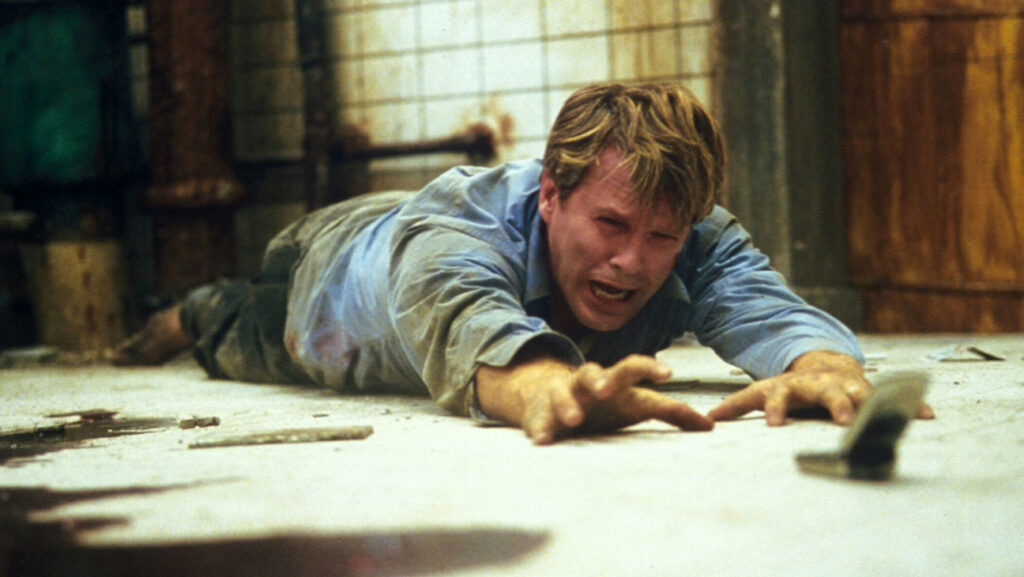

The Saw movies have been a long and winding journey of violence and depravity for over sixteen years now, and we ranked the series from the worst to the best
The Saw franchise kicked off in 2004 with a doctor named Lawrence Gordon (Cary Elwes) and a photographer named Adam (Leigh Whannell) waking up to find themselves chained to the walls of a filthy and ominous bathroom. The story of how they got there and how they’re expected to escape went on to spawn another seven films over the course of thirteen years, chronicling the gruesome crimes, philosophy and legacy of a serial killer named John Kramer (Tobin Bell) and his followers.
As fans are aware, the series has a surprisingly complicated and sprawling timeline that the movies steadily revealed through various twists and flashbacks. Many of these were sufficiently shocking and exciting, some others simply made us go “Huh?”. The story supposedly ended with Saw 3D AKA The Final Chapter in 2010 before a reboot – named Jigsaw – was attempted seven years later, one that still tied itself directly to the previous films.
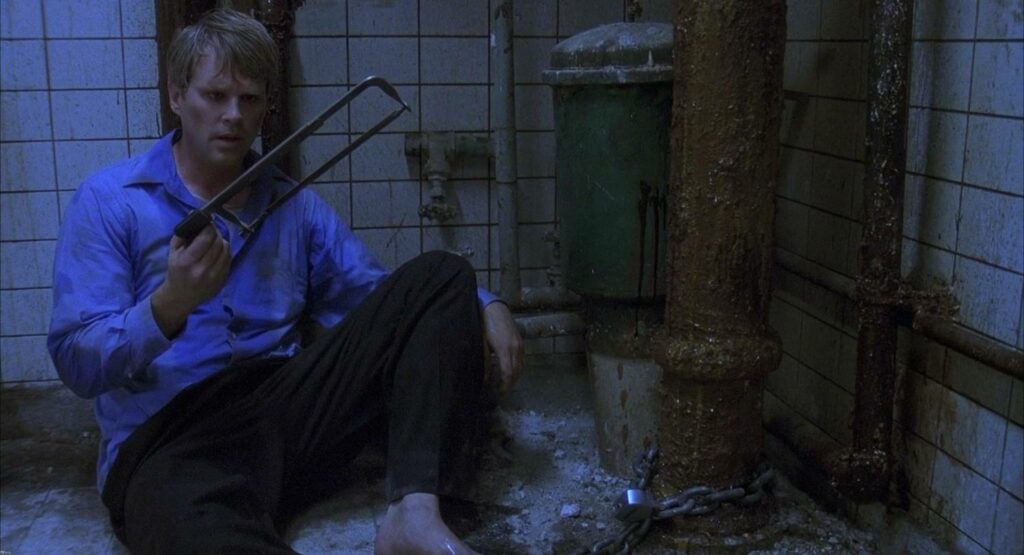
The newest entry, Spiral: From the Book of Saw, wipes the slate clean and doesn’t worry itself with the established canon too much, focusing on a copycat killer that tries to take Kramer’s twisted ideas to the next level. It’s one of the very best of the franchise (partly due to its purposeful distance from the others), and it made us want to go back through the Saw movies to determine a ranking of them all, from worst to best.
SPOILERS AHEAD FOR THE ‘SAW’ FRANCHISE
‘Saw 3D or Saw: The Final Chapter’
Saw has often found itself the target of criticism due to its overindulgent depictions of grisly physical suffering – some of these complaints are fair, others not so much. But Saw 3D, the franchise’s final entry for nearly a decade, earned every bit of ire thrown its way. It feels excessively cruel even for a Saw film, offering nothing in the way of hope, and doesn’t satisfy in the way an ending of a series should. Everything leading up to Saw 3D alluded to the culmination of John Kramer’s painstaking and violent work, but all that happens is the torture and killings of a random woman whose only crime was cheating on her boyfriends, a small group of white supremacists, and a man who lied about surviving a Jigsaw trap (whose family and friends are also slaughtered). The film’s first trap is a public display – something that’s a first for the movies – but it doesn’t lead to anything, and the reveal that Dr. Gordon survived the events of the first film and has been working for Jigsaw from the shadows the entire time is much more bizarre and nonsensical than revelatory.
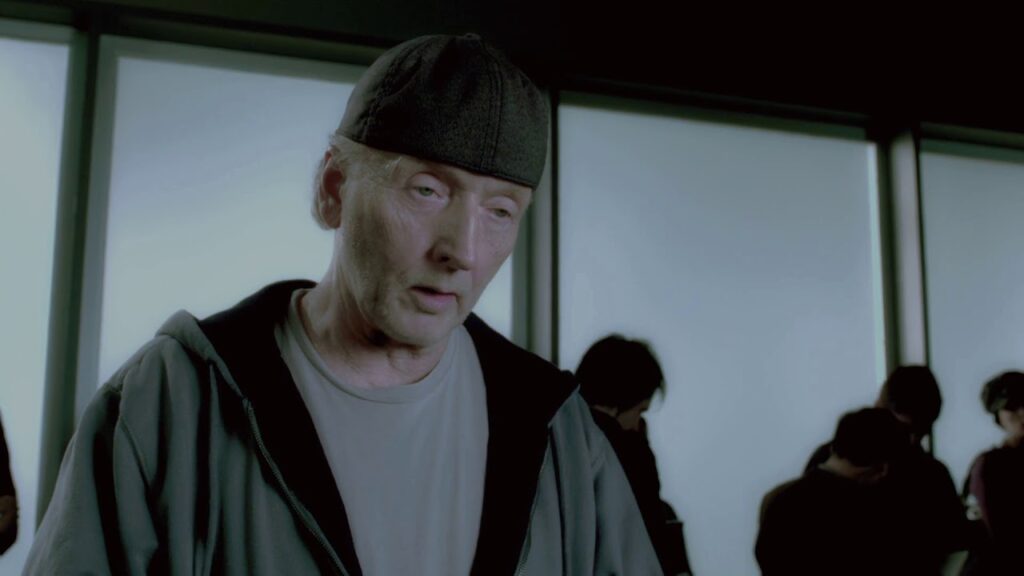
‘Saw V‘
The fifth Saw film is the first where Detective Mark Hoffman (Costas Mandylor) takes center stage as the villain, carrying on the work of Jigsaw while evading his own police department. But Hoffman’s stone-faced and ruthless demeanor just isn’t as interesting as Kramer’s charisma, riddles and sense of higher purpose. Tobin Bell’s absence is definitely felt, and it becomes clear when the movie’s best scenes are the few that feature him in flashbacks. Hoffman’s induction into Team Jigsaw is when the story is at its most interesting and it genuinely helps fill in many of the gaps left open in the previous films. The film’s central trap, which has a group of five people going through various tests, goes exactly where you think it’s headed: they all could’ve survived if they had only worked together! It’s weird that this is treated like some epiphany when it’s pretty obvious early on, and it’s something we’ve seen in the other films!
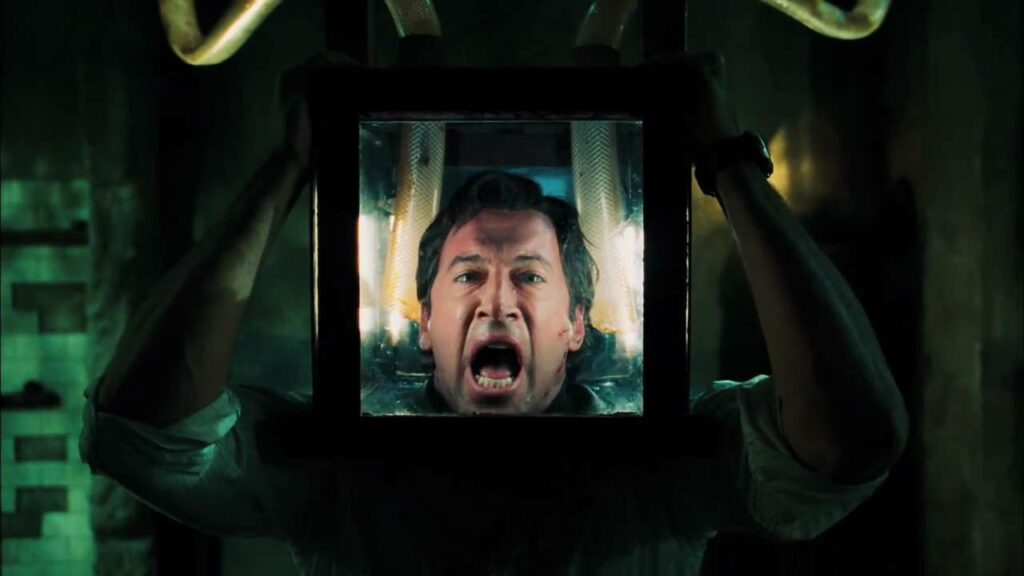
‘Jigsaw’
The 2017 reboot / continuation of the franchise had plenty of cool ideas. The film follows a pair of pathologists rather than the usual detectives, as they investigate a series of killings that fit the crimes of John Kramer (and even have his DNA at the scenes). Only problem is, Kramer has been dead for over a decade now. Jigsaw’s focus is on another group trap, where five people find themselves stuck in a barn full of death, and the film introduces fun concepts like dark web message boards and fanatics dedicated to Kramer’s crimes, and has some inspired traps like laser collars and giant funnels of doom. Unfortunately, the film’s pace is severely sluggish, the tone is uneven, and the twist ending that reveals yet another Jigsaw apprentice – one that has apparently been working for him even before the first film – is completely ludicrous.
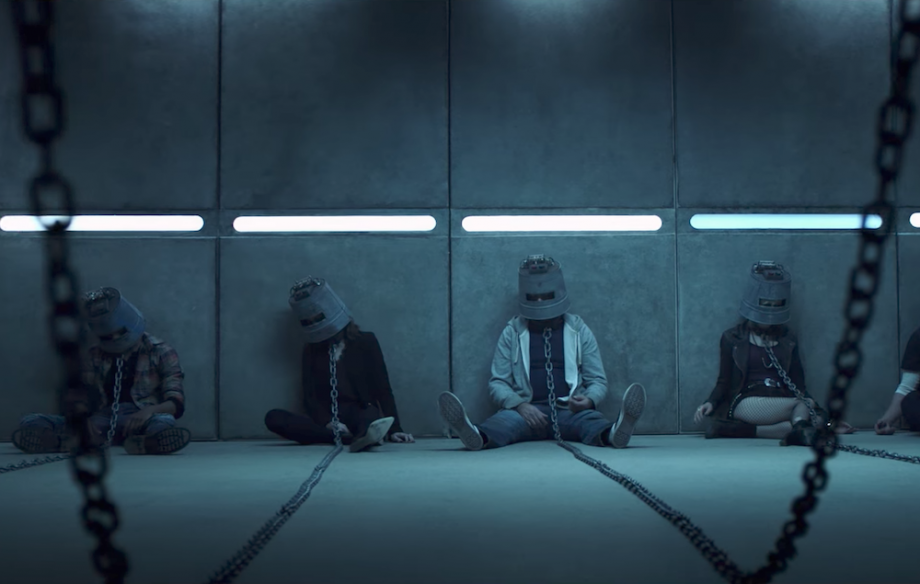
‘Saw IV’
Saw IV opens with John Kramer’s autopsy, which is fittingly one of the series’ grossest scenes – and one of its best. It’s interesting to see when Saw’s trademark nastiness is used in ways other than a big clunky death trap, and the juxtaposing colors of the grey, lifeless corpse and its bright splashes of blood of guts within make for a morbidly mesmerizing sequence. It’s proof that even three films in, director Darren Lynn Bousman – who picked up the series from James Wan with Saw II – still had plenty of style to spare (a clip of one of the film’s fun transitions between scenes also recently went viral on Twitter). Saw IV gets into the true backstory of Kramer and his life with his wife, Jill Tuck (Betsy Russell) before he went off the deep end, showing the first trap he ever built and its first victim. But this is intercut with the less interesting story of another person going through yet another series of tests, and while it’s nice to see Daniel Rigg (Lyriq Bent) from the previous two films take the spotlight, he’s not given much to work with – or even say. The film also brings back Donnie Wahlberg as Eric Matthews from Saw II, only to have him stand around and eventually get his head smashed. But maybe some find that part to be awesome.

‘Saw III’
The Saw franchise’s domination of the Halloween box office was truly solidified with the third movie, proving that the series was here to stay and wasn’t afraid to take risks. While the movies would continue, Saw III makes the choice to kill both its central character, John Kramer, and his would-be successor, Amanda Young (Shawnee Smith) in a legitimately shocking ending. No takebacks. The film is also the first to feature a single person – in this case a grief-stricken alcoholic father named Jeff (Angus Macfadyen) – have to go through more than one trap, and try to save others in the process. The film’s main plotline of Kramer having Amanda kidnap a doctor (Bahar Soomekh) in order to keep the cancer-stricken killer alive is also refreshingly different than any other Saw film, and leads to the series’ best gore scene that isn’t a killing, but a nail-biting depiction of brain surgery. That said, it was also the start of the series’ becoming increasingly (and arguably unnecessarily) brutal. Oh, and the pig vat trap? As disgusting as it gets.

‘Saw II’
The first of the Bousman era, Saw II cranked everything up to eleven and then broke off the lever. Showing the world that Saw was a horror franchise destined for a place in pop culture, the sequel went bigger, giving star Tobin Bell time to shine and deliver an iconic villain performance. The traps are gnarlier, the premise of having several people stuck in a makeshift house of horrors is inspired, and the film’s ending twist is even stronger and more shocking than the original’s. For all of its hopeless grisliness, Saw II still feels like the people behind the scenes are having a great time.

‘Saw VI’
The first of two films directed by Kevin Greutert, Saw VI is the hidden gem of the franchise, standing out from the pack in numerous ways. For one thing, Jill is finally turned into an active participant in the proceedings after being on the sidelines since Saw III, something that feels long overdue. The trap sequences also feel more horrifyingly inspired than they’ve ever been. One forces you to hold your breath or be crushed in a scene that plays on tense silence rather than the usual screams of terror, another pits two people against each other in a competition to see who can mutilate themselves more. But Saw VI feels like the first in the series where Jigsaw has more of a direct target, and in doing so, gives the movie something to actually say. The victim this time around is William (Peter Outerbridge), the head of a health insurance company who, along with his complicit employees, either denies coverage for sick people or drives them deep into debt, treating life and death as nothing more than a business. There’s a sick kind of justice in William being forced to choose who lives and who dies amongst his team, and the film’s obvious grievances with the U.S. healthcare system are surprisingly poignant.

‘Spiral: From the Book of Saw’
Bousman returned to the dormant Saw franchise after more than a decade for one reason only: Chris Rock. A chance meeting had the comedian pitching the idea for a new movie to the right studio executive, leading to a revival of the series that feels both fresh and familiar. With Rock starring as Detective Zeke Banks, Spiral is both a classic Saw setup – a new Jigsaw killer is on the loose with deadly traps and creepy messages – but one with a timely and heated focus: this new killer is targeting corrupt cops, taking John Kramer’s original philosophy to the next step by targeting entire institutions rather than sole individuals. It’s also very funny at times, thanks in large part to Rock and costars Max Mingella as William, his rookie partner, and Samuel L. Jackson as his father, that liven things up and make space for real humor. It’s a worthy new direction for the franchise.

‘Saw’
It’s just tough to top the original. The first Saw film set the stage for all future punishment, establishing the series’ twisted pathology, its inspirations from thrillers and police procedurals, its hectic editing style, its iconic imagery (like Billy the puppet) and quotes (“I want to play a game”), and its grimy, sweaty aesthetic. The gruesome traps are simply the window dressing to a story that’s much more of a mystery thriller, and the plot’s unwinding puzzle box – set mostly in a singular location – is engaging with clever reveals and wonderfully committed performances from its two lead actors. The scenes of them being abducted by a figure in a pig mask, especially when Adam only has the flash of his camera to illuminate the space, are genuinely unsettling, thanks in part to the film’s relatively tiny budget that gives everything a raw, unsanitized look. Sometimes, less is more, and Saw is a prime example of that.
